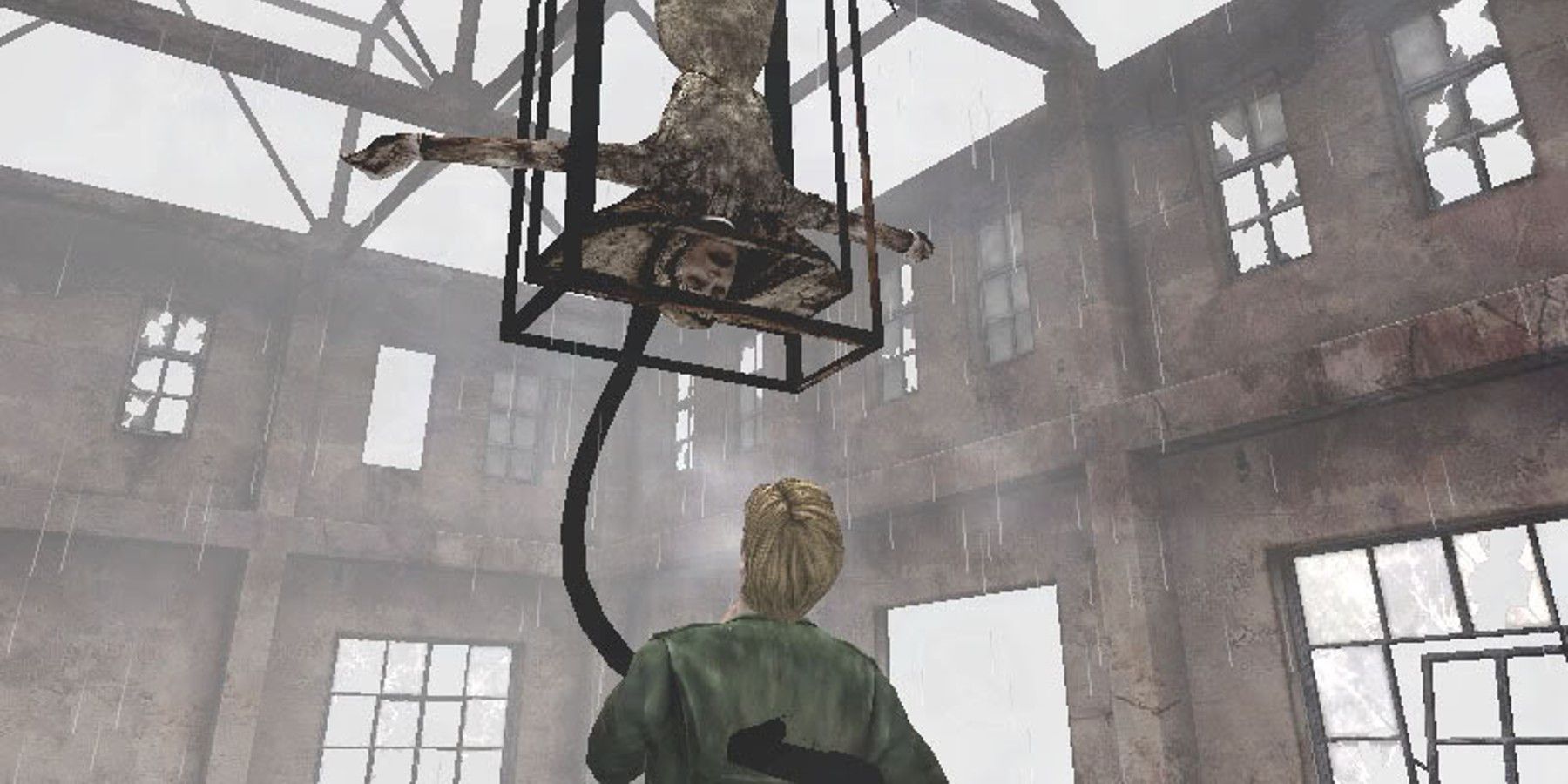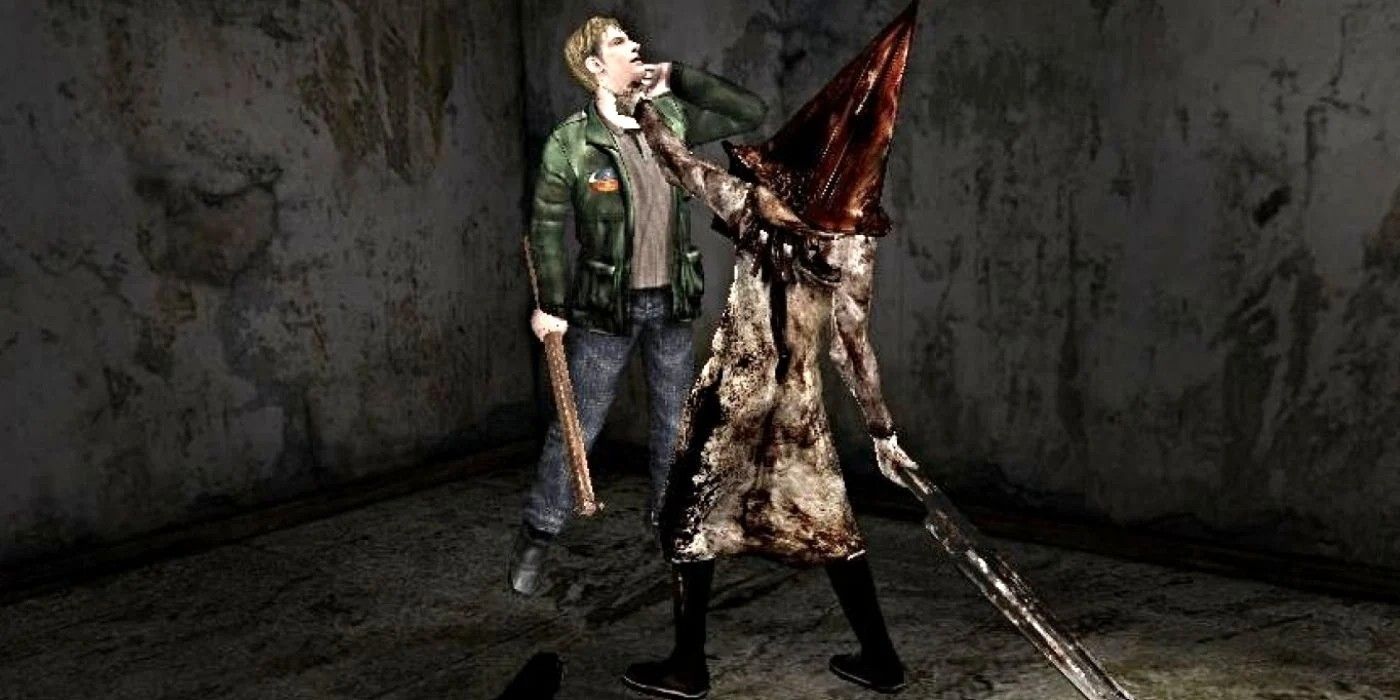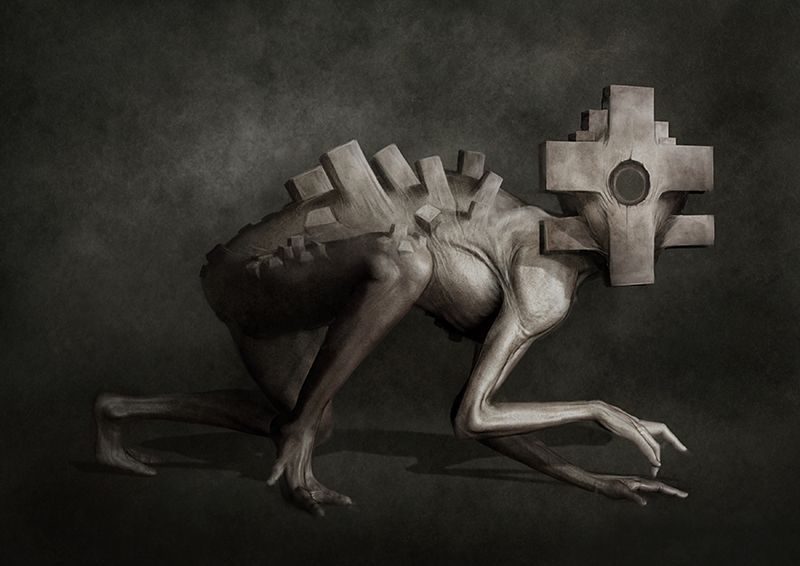The Silent Hill franchise is renowned for its dread-inducing settings, disturbing plotlines, and eerie soundtracks. However, one aspect of the survival horror games that is perhaps the most famous is its creature design, with the likes of the iconic Pyramid Head grabbing players' attention (and throats) two decades after he first appeared in Silent Hill 2.
Masahiro Ito is the talented artist credited with creating this memorable Silent Hill monster, and fans remain hopeful that rumors of a reboot involving his artistic talents prove to be true. However, the town’s ghastly denizens have taken inspiration from a number of other famous modern artists over the years.
Key Influences On Early Silent Hill Creature Design
Silent Hill was released in 1999 for the PS1, and is considered by many fans to have been ahead of its time. Dispensing with the schlocky B-movie thrills of its main inspiration, Resident Evil, Silent Hill ushered in an era of more cerebral and psychological horror. The game utilized inventive mechanics like a broken radio that crackles whenever a monster is nearby to elevate players’ fear to almost unbearable levels, and transformed "safe" locales like schools and hospitals into theaters of dread.
Although the game did take inspiration from popular western horror staples like the works of Stephen King — albeit filtered through a very Japanese lens by the Konami development team — it also drew from less obvious genre staples. One key inspiration for Silent Hill was the work of David Lynch, with the town and its residents evoking his celebrated TV series, Twin Peaks, particularly with uncanny dialogue and a penchant for drifting into bizarre alternate dimensions.
Despite its more highbrow leanings, the game was not afraid to deploy gruesome imagery when required. The works of 15th century painter Hieronymus Bosch heavily inspired some of Silent Hill’s grisly, surrealist scenery, particularly in the blood-soaked and rust-coated Otherworld. The monsters were also terrifyingly grotesque, with the game’s menagerie featuring skinless dogs as well as monstrously deformed nurses.
However, it was not until Silent Hill 2 that Team Silent really started to flex its creative creature design muscles. With Masahiro Ito now on board, the development team decided to steer clear of traditionally scary enemies, eschewing giant misshapen monsters or zombies in favor of disturbing the player with psychosexual imagery.
As a result, players encountered such unsettling creations as Silent Hill 2’s Mannequins — two pairs of conjoined legs that walk upright — which bear a striking resemblance to Hans Bellmer’s famous “Dolls." In his 1936 surrealist photographic series “Die Puppe” (“The Doll”), Bellmer assembled and reassembled dolls into disturbing shapes that raise questions about the nature of sexuality. The game uses this idea ingeniously to represent protagonist James Sunderland’s own repressed desires, and his feelings of guilt after the death of his wife.
Another celebrated artist who inspired the horrifying inhabitants of Konami’s seaside resort was Francis Bacon. Many of his portraits, such as his 1953 painting “Study after Velázquez's Portrait of Pope Innocent X,” seem to encase their subjects in a wireframe cage to suggest torment or imprisonment. A number of the creatures in Silent Hill 2 are similarly entrapped, including the game’s final boss, Mary, with the box around her suggestive of the bed to which she was confined by her debilitating illness.
Indeed, even Pyramid Head’s infamous triangular helmet was intended to evoke a sense that the creature is suffering endlessly, barely able to walk beneath the weight of the metallic prism that has been fastened around his skull. Fans have theorised that beneath the horrifying headgear, Pyramid Head might even have been an alternate version of James himself.
How Silent Hill’s Monster Designs Evolved
The later Silent Hill games also drew extensively from modern artistic works. Silent Hill 3 featured a harrowing shot of dangling female legs, implying that something terrible was happening to an offscreen prisoner, which was inspired by Kobo Abe’s 1973 novel “The Box Man.” The 1980 novel by Koinrokka Beibizu, “Coin Locker Babies,” was confirmed by Team Silent to have inspired the plot for Silent Hill 4.
However, following the dissolution of Team Silent after the series’ fourth installment, future developers had different visions for the town’s monsters. The most successful follow-ups recognized that the game’s creatures were critical to their success, as by now the town’s bestiary had been made even more famous by the success of the first Silent Hill movie, where they featured heavily in promotional material.
Silent Hill: Homecoming’s grotesque Needler takes the form of a humanoid torso with elongated limbs and its head sprouting from its groin, a possible reference to childbirth, one of the game’s themes. Such symbolism was also very effectively deployed in the “Raw Shock” monsters in Silent Hill: Shattered Memories. Although these were the only enemies to feature in the game, their appearances changed throughout the adventure to mirror the player’s actions and perceived psychological makeup.
Although the series continued to feature such innovations, other monsters became established tropes. The heavily sexualized Bubble Head Nurses continued to feature in later games, having become as famous as Pyramid Head himself. Some fans were frustrated because they recognized that both monsters only made sense in Silent Hill 2 as manifestations of James Sunderland’s fractured psyche. The Butcher in Silent Hill: Origins was also criticized for being an uninspired Pyramid Head clone.
Sadly for fans, the last full Silent Hill game, 2012’s Silent Hill: Downpour, was released almost a decade ago. Although Hideo Kojima’s Silent Hills project looked set to breathe new life into the franchise, it was unceremoniously cancelled, and the series is now shrouded in as much uncertainty as it is in swirling mist. Fans hope that a future release will find its way to their consoles, and that such a game features creature design imaginative enough to rival even the Team Silent classics. Future Silent Hill developers will need to take inspiration from the darkest corners of the modern art world if they wish to make these hopes come true.



